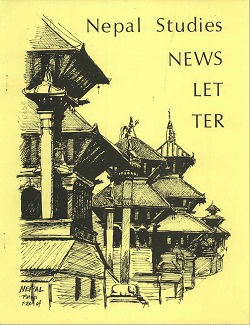Author Biography
Riamsara Kuyakanon (PhD, Geography, University of Cambridge, 2015) is a geographer who works at the nexus of conservation, culture and development. Her doctoral dissertation focused on the relationship between environmental conservation, Buddhist culture and sustainable development in Bhutan. She teaches on sustainable development, cultural geographies and geographical theories, and is affiliated with the University of Cambridge’s Department of Geography, Mongolian and Inner Asian Studies Unit, and Institute for Continuing Education. She has published several chapters in edited volumes on aspects of environmental conservation and culture in Bhutan.
Dorji Gyeltshen (Masters in Buddhist Philosophy, Gangteng Shedra, 2006) is a Buddhist scholar, researcher, and lecturer at the College of Language and Culture Studies (CLCS), Takse, Bhutan. After training to the highest level (Khenpo) he became Dzongkha language editor for Bhutan Observer, Bhutan’s first bilingual private newspaper. He has project-managed the study and digital documentation of the Pad gling tradition in Bhutan, and Bhutan’s monastic archives for the Shejun Agency for Bhutan’s Cultural Documentation and Research. He has translated various treatises and books, co-authored biographies on the Second and Third Kings of Bhutan, and written on early book production and printing.
Abstract
This interdisciplinary study examines a community ritual in Mongar, eastern Bhutan, in connection to its socio-ecological context. We provide an in-depth documentation of the tsensöl (btsan gsol) deity-propitiation ritual to ‘seal’ territory and prohibit entry to higher mountain reaches. The ritual and the community mountain-closure period (ladam) that it precedes are first situated in context of other documented (but now defunct) territorial sealing practices in Tibet and the Buddhist Himalaya. We then analyse and discuss the syncretic, flexible and place-based nature of tsensöl, and show how the ritual, the mountain god Khobla Tsen and ladam are interrelated in expressing community concerns for safe-harvests and wellbeing. We conclude by examining what a ritual such as tsensöl might tell us about village political ecology, community concerns and knowledge of the environment.
Acknowledgements
Together the authors would like to acknowledge and thank the villagers of Soenakhar, Dasho Mongar Dzongda Sherab Tenzin, Aum Choten Zangmo and family and Yeshi Nidup, who in various capacities helped and advised us, provided accommodation, and gave us their valuable time. We also thank the Bumdeling Wildlife Sanctuary and the Department of Forests, Mongar, for providing initial accompaniment and transport. Riam also expresses grateful acknowledgement and thanks to the Ugyen Wangchuk Institute for Conservation and Environment and to the Ministry of Agriculture and Forests, Royal Government of Bhutan for enabling her research, to Mr. Thinley Wangdi and Mr. Sonam Phuntsho for facilitating fieldwork, to Dr. Karma Phuntsho for his lively interest and help with translations and references, and to Mr. Philip Stickler for cartography.
Creative Commons License

This work is licensed under a Creative Commons Attribution 4.0 License.
Recommended Citation
Kuyakanon, Riamsara and Gyeltshen, Dorji. 2017. Propitiating the Tsen, Sealing the Mountain: Community Mountain-closure Ritual and Practice in Eastern Bhutan. HIMALAYA 37(1).
Available at:
https://digitalcommons.macalester.edu/himalaya/vol37/iss1/7
List of figures
Fig.1_Tsensöl offerings_P5173062 copy.JPG (1087 kB)
Fig.1
fig.2_gomchen Tshewang Rinzin_P5173108.JPG (1045 kB)
Fig.2
Fig.3_picnic_P5173109 copy.JPG (927 kB)
Fig.3
Fig.4_Sealing the trail_P5173169 copy.JPG (1111 kB)
Fig.4
Fig.5a_harvest prediction_P5173180 copy.JPG (957 kB)
Fig.5a
Fig.5b_harvest prediction_P5173191 copy.JPG (1011 kB)
Fig.5b
fig.6_Dowatsemo_P9124445.JPG (868 kB)
Fig.6
fig.7_kasho_P9134591.JPG (1017 kB)
Fig.7
fig.8_Bumpoktor lhakhang_P9134603.JPG (929 kB)
Fig.8
Fig.9_Soenakar Soc FB 2016-01-07.png (3010 kB)
Fig.9
Fig_10_study area.jpg (404 kB)
map


